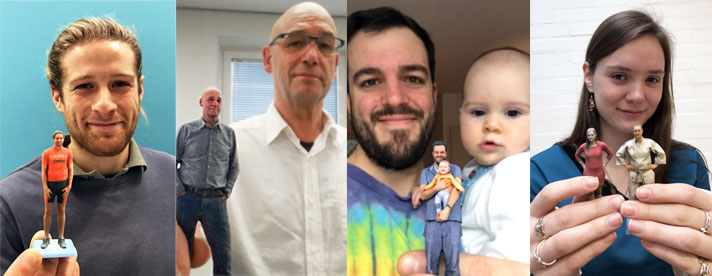

Our Scanning Stories series continues this week with an update from Shapeways’ 3D Scan Engineers Brigitte and Astrid that lets us in on how they achieved incredibly detailed 3D scans at Dutch Design Week. Learn more about 3D selfies in our first Scanning Stories post, and read on below for more tips and tricks to help you make the most of 3D scanning.
As 3D selfies get ever more popular, we’re excited to have the opportunity to use a variety of scanning tools, from top-of-the-line scanning booths to handheld tablet-based software.
At Eindhoven’s Dutch Design Week (DDW) in October, we were lucky enough to present the amazing 3D Scan Lounge from Scanologics and offer members of the public a chance to have their 3D scans taken.
We 3D scanned lots of people during DDW: young and old, parents with their kids — together or separate — grandparents, and even a man with his dog. Everyone was super enthusiastic about the booth. Plus, taking a 3D scan within a split second gave some the opportunity to experiment with different poses.
The scanbooth is a portable, full body, photogrammetry 3D scanning solution. That means that in one second, hundreds of 2D pictures are taken that will be processed into a printable 3D selfie. The main differences between a 3D scan made with a scanbooth and those made with a handheld scanner like the Skanect are speed and quality. Taking a 3D scan in a scanbooth only takes a few seconds, whereas handheld scanners will take about a minute. And, the faster the scan, the more accurate it will be.
Check out the high-definition results below:

In our next post, we’ll talk about editing your manual scans from tablet-based software Skanect.
That’s it for now. Stay focused and enjoy the world of 3D scanning!


